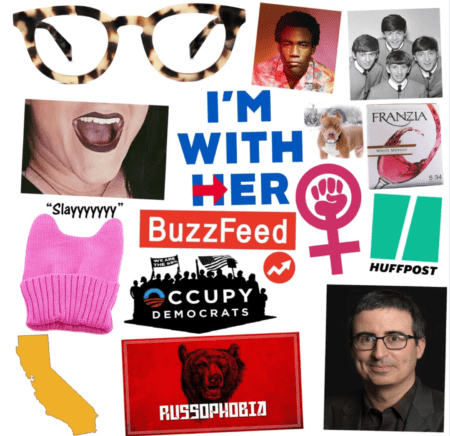
In the last few years, ‘liberal white women’ emerged as a common point of departure for very different sorts of politics. Some of those politics connect to the far right. But I’ll set those politics aside. Here, in this post, I’m interested in two narratives about liberal white women that appear on the left and center-left.
I’ll argue these two narratives share more in common than many think.
Two Narratives about Liberal White Women
What’s this tug of war involving liberal white women? I’ll work through the two narratives in turn. Here’s the brief version of each one:
Narrative One: Liberal white women play a central role in U.S. white supremacism. They do so in a few respects. One, they profess anti-racist sentiments but nonetheless still uphold racism in less obvious (and violent) ways. For example, they call the police on black people minding their own business. They serve as ‘damsels in distress’ to be ‘saved’ by white men. And they support a wide range of policies that advantage their own children at the expense of the children of poor and/or black people. Not to mention the fact that they hoard opportunities that could go to those other families.
Narrative Two: Liberal (or leftist) white men are a bigger problem than liberal white women. But those men bash liberal white women rather than owning up to their own issues. Men blame women for racist systems to cover up their own problems. And they blame liberal white women for everything from the election of Trump to the advancement of white supremacism. Meanwhile, in addition to pinning the blame on someone else, this rhetorical move allows them to enact their own misogynistic feelings in a socially sanctioned manner.
For a quick start, I’ll say we find both narratives in lots of places. However, the narratives often fly past one another. Each has its own custom space in public dialogue, where they tend not to meet. For instance, we find Narrative One most often in racial justice spaces. Narrative Two, by contrast, we find most often in partisan Democratic spaces. Insofar as these remain separate spaces – as they often do – rarely do the two narratives play together.
How Different are the Narratives?
But the narratives do interact sometimes on social media, especially in the wilds of Twitter. And there we find people setting the narratives against one another, as if laying out Narrative One ‘disproves’ Narrative Two (or vice-versa).
It doesn’t seem to, though. There’s no logical contradiction between the two. Furthermore, I think we have pretty good reasons to believe both are (for the most part) true.
I won’t spend a lot of time defending Narrative One. I’ve addressed it before on this blog. And racial justice groups do a better job defending it than I could. For merely one source among many, I’ll point readers to Elizabeth McRae’s book Mothers of Massive Resistance.
Narrative Two can be trickier, but I think it clearly happens. Much of the trouble is that the discussion takes place within leftist circles inhabited by the very people doing it. So it catches flak for the people who advocate it. I documented some cases of Narrative Two in the context of the 2016 election and the 2020 election. Readers can find those posts here and here. The upshot of these two posts is that white men – not white women – were the main driver of Trump’s 2016 win.
Ultimately, I think a few forces come together to make liberal white women the focus here. One, as I’ve said, is liberal (or leftist) white men finding a socially sanctioned way to display misogyny. That’s where it gets ugly. But, two, I think lots of racial justice activists see white women as more sympathetic to their causes than white men. They know white men are the biggest problem, but they see white women as more ‘winnable’ to their cause. And so, they’re the better target for a guilt campaign.
The Verdict?
Both Narrative One and Narrative Two are pretty accurate. Leftists tend to get Narrative One pretty quickly. But when I lay out Narrative Two for people, sometimes they object to it by citing Narrative One. In other words, they think those who advocate Narrative Two engage in ‘white knight’ behavior of some kind or another.
That probably happens sometimes. But it’s hardly a core part of Narrative Two. You can accept both narratives at the same time. And you should, since they both tell accurate stories.
And so, yes, liberal white women can (and do) bolster white supremacism while, at the same time, serving as an unfair target for the misogynistic aggression of liberal or leftist white men. Both things happen.